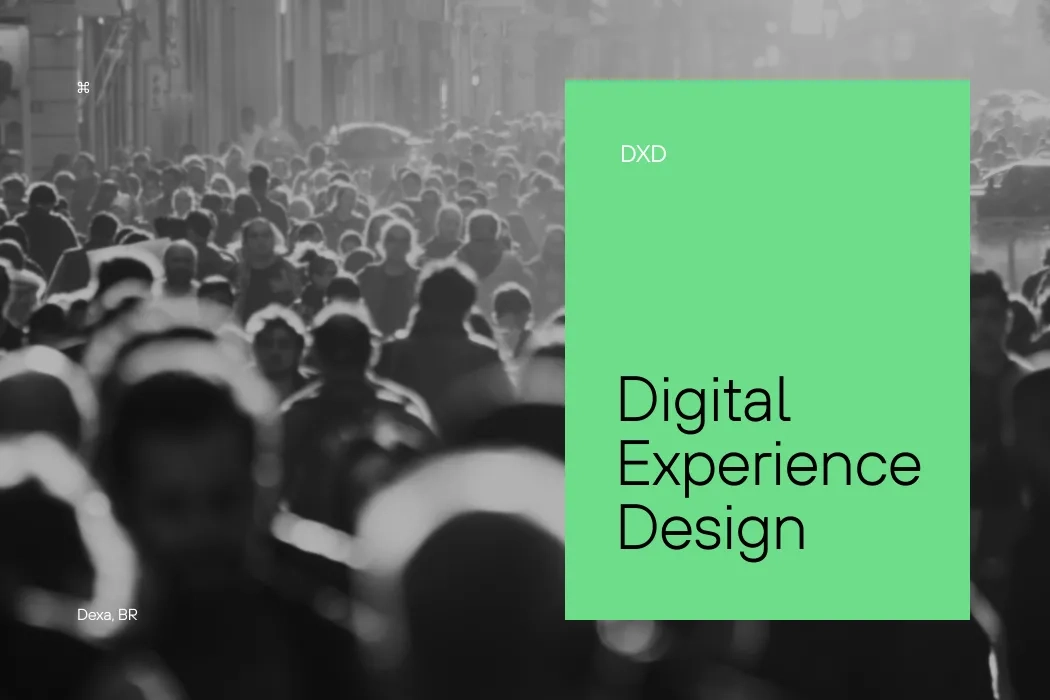
The traditional method of developing websites and digital products no longer works. Given the current landscape of constant market changes, rapid technological advancements, and evolving user behavior, most product and technology teams have less and less time to execute ideas and bring them to market. Their initiatives are surrounded by uncertainties regarding the product’s acceptance by the target audience, leading to delays in development and missed market timing.
Being unsure about results and surrounded by uncertainties can significantly impact a project. This can undermine the confidence of the team and stakeholders, causing even the most promising projects to experience substantial delays. Another issue is the risk of the new product or solution not being accepted by the market or having low user engagement. There is nothing worse than a feature no one uses or an app that is opened only once.
Discover more about what we do
A study by the IEEE - Institute of Electrical and Electronics Engineers reports that globally, 15% of technology projects fail each year. The top three reasons for this are:
- Lack of understanding of user needs
- Poorly defined experience requirements and misalignment of business objectives among stakeholders, which accounts for approximately 27% of digital product project problems.
These issues could be resolved and easily identified at the beginning of the project if well-executed discovery and design phases were introduced early on. This is because these methods help us to materialize and validate ideas even before development begins.
And it was with this goal in mind that we developed DXD.
Getting to Know DXD
Agile frameworks like SCRUM help speed up and streamline the software development process through design processes such as Design Thinking and Design Sprint. They contribute to providing clear responses and indications on whether the path being followed is the right one or not.
With the goal of helping companies and technology and product teams create amazing digital experiences by understanding real user problems, solving business challenges, validating potential solutions, and materializing ideas through ideation, prototyping, and testing, we developed DXD - Digital Experience Design Process.
A structured, robust, and effective process, DXD applies the fundamentals of Design Thinking and Agile methodology principles, taking solutions from ideas to a high-fidelity MVP prototype in just 8 weeks.
This process is divided into 3 main stages: Ideation, Validation, and Final Design.
1 - IDEATION
In this first stage of the DXD: Digital Experience Design process, we conduct a co-creation process with the involved teams, as we build and materialize the solution together with them. Within a few days, we have a high-fidelity prototype being tested and validated, understanding how the product will function and anticipating user reactions.
This stage spans two weeks, encompassing the Pre-Sprint, Design Sprint 2.0, and Sprint Results phases. It is an intense and well-structured process that helps us present challenges, validate potential solutions, and materialize ideas through prototyping and testing.
This process is crucial for presenting challenges to the team, validating possible solutions, and materializing ideas through prototyping and testing. It allows us to understand the real problem by conducting initial user tests and immediately reducing risks—achieving approximately 80% accuracy.
About Design Sprint 2.0
The Design Sprint was introduced to the world in 2016 by its creators, Jake Knapp and John Zeratsky, when they released the book SPRINT. In it, Knapp and Zeratsky present the method they developed and tested at Google. On the book's cover, they claimed that this method would solve major problems and test new ideas in just 5 days.
The book quickly became a bestseller, and the method is still used by major companies with great results. Two years later, in collaboration with the Berlin-based agency AJ&Smart, the method was updated to a new version, Design Sprint 2.0, which reduced the duration of the Design Sprint to 4 days.
Design Sprint
The Design Sprint provides design and development teams with a shortcut to learning without having to develop and launch a product. One of its main benefits is having a high-fidelity prototype ready for validation in a short period of time. But that’s just one of the benefits. Design Sprints are also great for:
- Aligning the team with client needs and product strategy
- Saving time and money
- Reducing risks related to product uncertainties
- Achieving better Return on Investment (ROI)
- Getting quick feedback from real users
- Gaining stakeholder buy-in
2 - VALIDATION
After the Ideation phase, we already have important results and rich insights about the product’s main journey. We also map out a list of key features, business needs, and essential functionalities that the product should have.
In the Validation phase, we prioritize functionalities based on user needs and business strategy to create a new, even more robust and high-fidelity navigable prototype. We will then conduct usability tests, evaluate heuristics, and gather user feedback.
This way, we gain a clearer direction for the path our product should take and have a refined and tested prototype of our MVP.
3 - FINAL DESIGN
Based on the usability tests conducted in the Validation phase and user feedback, we develop the Final Design of the MVP in this stage. It’s a version refined according to brand guidelines and visual identity and is ready to be presented to the product team, leadership, key stakeholders, and potential investors.
Additionally, at the end of this stage, we will have all the necessary assets for the handoff to the development team. We also provide a complete UI kit with the main product components, as well as written Job Stories and all project documentation up to this point.
All of this is done in an agile and efficient manner, based on the data and feedback collected in the previous stages.
Benefits of DXD
What are the gains from executing a method like this? After the entire process, we see how much we can benefit from the methodology. In addition to getting quick answers about the potential of the developed solution, we can visualize other important gains for the project. Benefits include:
- Accelerating and enhancing time to market
- Reducing the risks of investing heavily in an inefficient product
- Achieving the best possible ROI
- Having a high-quality prototype of the main user journey within 2 weeks
- Obtaining data and user feedback quickly and efficiently
- Reducing the need for developer rework
- Quickly validating if the solution is on the right track, with the possibility of course corrections before investing in development
Continuous Discovery
And it doesn’t stop there—the evolution of user experience continues with iterative cycles during subsequent development sprints through a Dual Track process, continuing the development and validation of new features.
In this way, DXD will continue to deliver new value to the project.
If you want to learn more about the DXD method, contact Dexa!
We are a digital experience agency with over 20 years in the market, offering precise and innovative solutions for brands and organizations across various sectors. Our team is ready to accelerate the digital experience design process for your project. Count on us!
